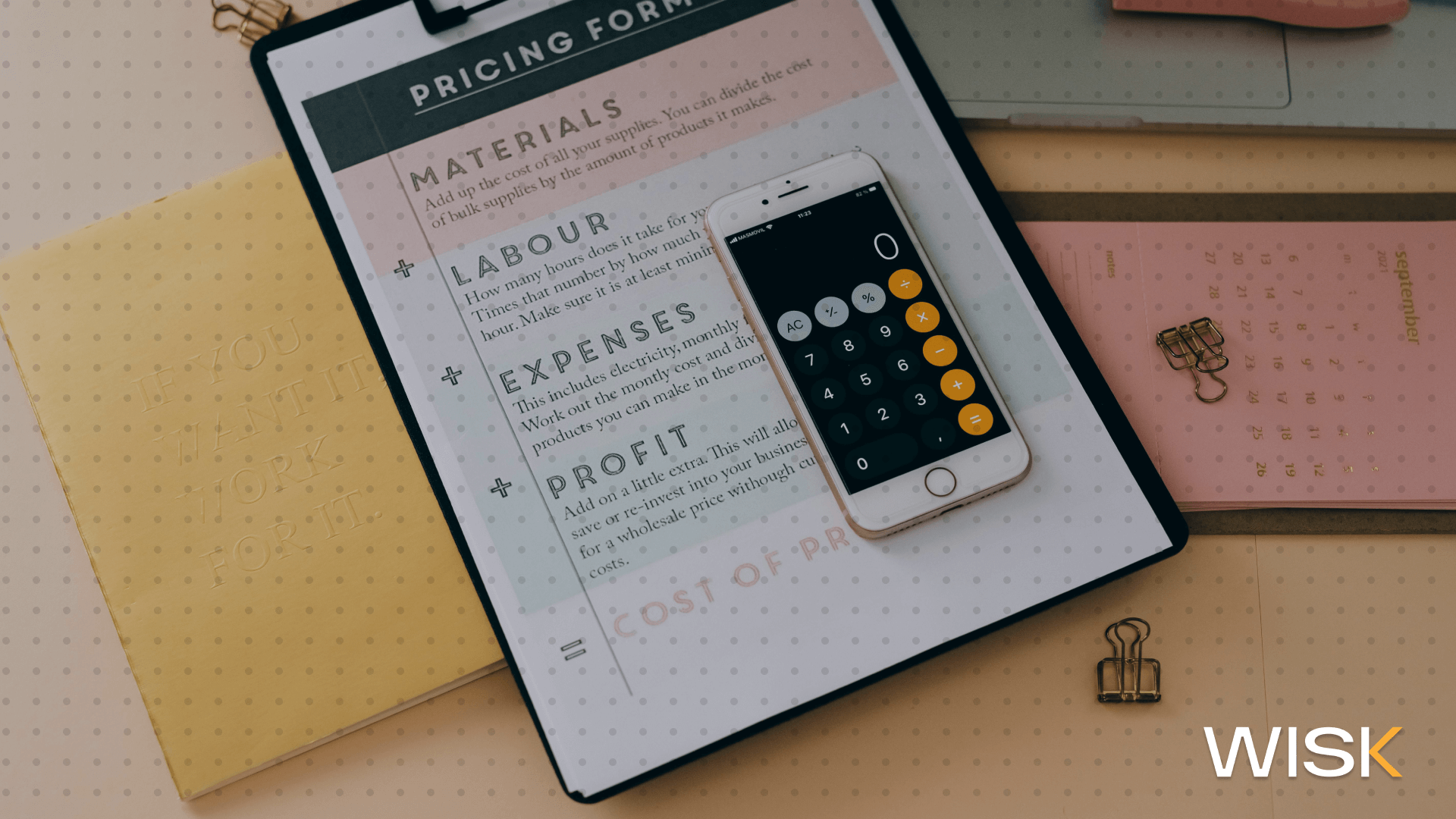The Importance of Table Management System
Restaurant's table management often overlooked, as restaurants tend to focus on the quality of food and service. However, table management is a crucial aspect of running a successful restaurant. It involves how a restaurant manages its tables, including reservations, seating arrangements, waitlist management, and overall guest experience.
The strategic implementation of a robust table management system stands as a crucial element in optimizing efficiency and enhancing the overall dining experience. Just as a restaurant carefully plans its menu, the organization of the restaurant floor plan is equally significant. A sophisticated system can make the dining room work harder for the establishment, seamlessly blending the nuances of walk-ins and reservations.
By leveraging advanced analytics to analyze turn times, manage guest preferences, and track dining history, restaurateurs can not only minimize wait time quotes but also foster customer retention.
This nuanced approach to table management goes beyond logistics, creating a synchronized dance of operational excellence that leaves a lasting impression on patrons. The amalgamation of delicious dishes and efficient table management ensures that the entire dining experience is delightful, from the first reservation to the final bite.

Impact on Customer Experience
When it comes to the impact on customer experience, a well-organized table management system ensures a seamless and enjoyable dining experience for both regular patrons and new guests. By efficiently handling reservations, the system helps save time for both customers and the restaurant staff, making the entire process smoother.
The restaurant reservation system plays a crucial role in providing guests with timely updates on table availability and accommodating their preferences, contributing to a positive and customer-centric atmosphere.
Moreover, streamlined table assignments through the system enhance overall operational efficiency, creating a favorable environment that resonates with the expectations of today's diners.
Provide guests with timely updates on table availability and accommodate their preferences. Moreover, streamlined table assignments through the system enhance overall operational efficiency, creating a favorable environment that resonates with the expectations of today's diners.
With a robust table management system in place, customers can relax and enjoy their meals without worrying about long wait times or inaccurate reservations.
Efficient Table Turnover Strategies
Implementing strategic table turnover strategies allows restaurants to balance customer satisfaction with the need to accommodate new guests promptly.

Custom Floor Plans:
One key to efficient table turnover lies in designing a custom floor plan that optimize space utilization. By strategically placing tables and considering traffic flow, restaurants can create an inviting ambiance while facilitating quick turnover.
A floor plan that takes into account varying party sizes and preferences (e.g., booths vs. tables) can also improve efficiency.
Flexible Table Inventory:
Restaurants can enhance flexibility by managing their table inventory effectively. Having a flexible approach to table assignments allows for better adaptation to varying party sizes and accommodating walk-ins without disrupting the overall flow.
Time Slots:
Introducing the concept of time slots can be a powerful tool for managing table turnover. By offering specific time frames for reservations or optimizing waitlist management, restaurants can create a structured dining experience that ensures a steady flow of guests.

Waitlist Management:
An efficient waitlist management system allows restaurants to adequately manage customer flow by accurately estimating wait times, assigning tables, and smoothly transitioning between reservations and walk-ins.
By leveraging technology such as restaurant reservation software, operators can proactively update diners on wait times and table availability, reducing customer frustration and enhancing their overall experience.
Implementing Reservation Systems
Implementing reservation systems is a pivotal step for modern restaurants, going beyond keeping reservations organized. By utilizing tailor-made floor plans and customizable views, establishments can maximize their dining spaces and easily accommodate different guest capacities. This enables them to optimize their operations and provide a seamless experience for their patrons.
This strategic approach enhances the overall dining experience, reducing wait times and providing a more personalized journey for customers. The ability to analyze turn times through reservation systems empowers restaurateurs to streamline operations efficiently, ensuring optimal table turnover, particularly during peak hours.
As restaurants embrace the evolution of the dining landscape, a well-implemented reservation system becomes a dynamic tool for staying ahead, offering exceptional service, and managing restaurant floor plans with precision.

What is the recommended number of tables for a server to handle at Once?
In restaurant table management system, the recommended number of tables for a server to handle at once can vary depending on factors such as the restaurant's concept, menu complexity, and server experience.
However, as a general rule, it is recommended that servers should handle no more than three to four tables at a time. This allows them to provide personalized service and ensure timely delivery of food and beverages without feeling overwhelmed or compromising the quality of their service.
Additionally, this also helps to prevent table turnover time from being affected and ensures that customers have a positive dining experience.
Streamlining Walk-in Processes
With the increasing popularity and convenience of dining out, restaurants need to be prepared for walk-in customers while managing reservations efficiently. By implementing a streamlined process for accommodating walk-ins, restaurants can optimize their table turnover and enhance the overall dining experience.
This process can include having designated areas for walk-in customers, providing accurate wait time quotes, and offering text message notifications when tables become available. Additionally, utilizing reservation and table management systems can help manage walk-ins efficiently by providing real-time updates on available tables and helping to balance the flow of guests.
Overall, streamlining walk-in processes allows restaurants to maintain a steady flow of customers and optimize their table turnover without compromising customer experience.


Optimizing Seating Arrangements
Restaurant floor plan optimization goes beyond just placing tables strategically. It also involves optimizing seating arrangements to cater to different party sizes and preferences.
By incorporating flexible seating options, such as booths, high-top tables, and communal tables, restaurants can accommodate varying group sizes and create a dynamic atmosphere.
Furthermore, seating guests based on their preferences and needs can enhance the dining experience. For example, seating families with young children in a quieter area or offering more intimate seating for couples can make customers feel valued and enhance overall satisfaction.
Technology in Table Management
Digital Reservation Platforms
Compare to the traditional pen-and-paper reservation systems, the rise of digital reservation platforms has revolutionized the way restaurants manage their tables and reservations. These platforms offer easy-to-use interfaces that allow customers to make reservations quickly and conveniently.
With just a few clicks, customers can select their preferred date and time, specify the number of guests, and even make special requests. This not only streamlines the reservation process but also minimizes human error and ensures accurate bookings.
Online ordering also allows customers to quickly view and choose available tables, reducing wait times and creating a better overall dining experience.
Additionally, these platforms often offer helpful features such as waitlist management and customer data collection, which can provide valuable insights for optimizing table turnover.

Mobile/Tablet Solutions for Waitstaff
Online ordering and payment systems are becoming increasingly popular in the restaurant industry, with mobile and tablet solutions being a major part of this trend. By equipping waitstaff with handheld devices for taking orders and processing payments, restaurants can reduce wait times and improve table turnover.
Additionally, these solutions also allow customers to pay their bills directly from their phones, making the dining experience more convenient and efficient.
Restaurant Table Management Software
Table management software offers a comprehensive solution for optimizing restaurant floor plans and managing tables efficiently. These systems can provide real-time updates on table availability, manage reservations, and even track waitlists.
Additionally, they offer insights into customer dining history and preferences, enabling personalized service and enhancing the overall dining experience. With advanced features like predictive analytics and mobile access, restaurant table management software is a powerful tool for streamlining operations and staying ahead in the competitive restaurant industry.
Restaurant table management has evolved with the introduction of sophisticated Table Management Software, providing establishments with a comprehensive solution to optimize their operations. This innovative software allows restaurants to easily access a bird's eye view of their dining room, efficiently control table types, and manage reservations seamlessly.
With features such as chit printer integration and two-way SMS communication, these systems empower restaurants to provide guests with a streamlined and enjoyable experience. The mobile order control and house maximization capabilities enable establishments to maximize covers and ensure a smooth workflow. In essence, Table Management Software goes beyond conventional methods, offering a modern, tech-driven approach to enhance the overall efficiency and guest satisfaction in the restaurant industry.
Staff Training for Effective Restaurant Table Management System
Restaurant seamlessly running depends on the staff's training for effective table management system implementation. Staff who are adequately trained in utilizing the restaurant table management system can effectively handle reservations, seating arrangements, and manage guest experiences. With regular training sessions, servers can learn how to use the software efficiently and make informed decisions to optimize table turnover and improve customer service.
The proper utilization of the table management not only enhances restaurant operations but also empowers the staff to provide a superior dining experience. By investing in staff training, restaurants can ensure that their table management is being used effectively and maximize its benefits.

Communication and Coordination
Effective communication and coordination among staff members is also crucial during peak hours to ensure smooth service and minimize wait times. By anticipating and preparing for peak dining hours, restaurants can maintain a positive guest experience and optimize their table turnover.
Handling Peak Dining Hours
An entire shift can be disrupted by being caught off guard during peak dining hours. To combat this, restaurants need to have a well-defined plan in place for handling these busy times. This includes having ample staff on hand, implementing efficient table management practices, and utilizing technology to streamline operations.
Handling Special Requests and Events
Having special events can be both exciting and challenging for restaurants. It requires additional resources, staff coordination, and effective table management to ensure a successful event. By utilizing an advanced table management, restaurants can efficiently handle special requests and events without disrupting regular operations.
The software can provide insights into available tables, customer preferences, and even offer customized menu options for large groups. Additionally, with features like waitlist management and real-time updates, restaurants can seamlessly accommodate walk-in guests during busy events.
Overall, investing in a comprehensive restaurant table management system not only enhances daily operations but also enables establishments to handle special requests, events, and peak dining hours with ease. By embracing technology, streamlining processes, and providing efficient service, restaurants can optimize their seating arrangements and cater to the ever-changing needs and preferences of their guests.
With the right table management in place, restaurants can achieve higher customer satisfaction, improved table turnover, and ultimately drive business growth. So, it is crucial for restaurants to stay updated with the latest technology trends and continually evolve their table management strategies to thrive in the competitive industry landscape.
Conclusion
Table management system and technology have greatly transformed the restaurant industry. From digital reservation platforms to mobile solutions for waitstaff and advanced table management software, these technological advancements have revolutionized the way restaurants manage their tables and enhance customer experiences.
However, it is essential for restaurants to invest in staff training for effective table management system implementation and continuously adapt to new features and trends in order to stay ahead in the competitive market. By optimizing their table management processes, restaurants can achieve higher efficiency, increased customer satisfaction, and ultimately drive business growth.
With a well-executed table management strategy, restaurants can elevate the overall dining experience for their guests and ensure long-term success in the industry.




